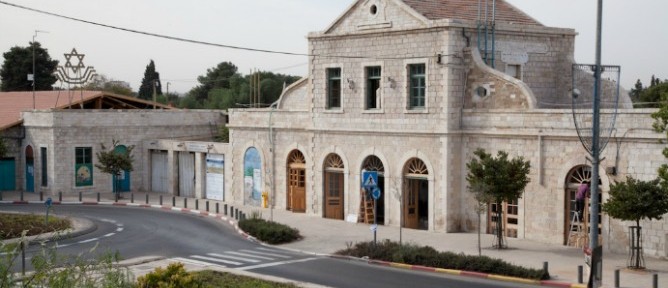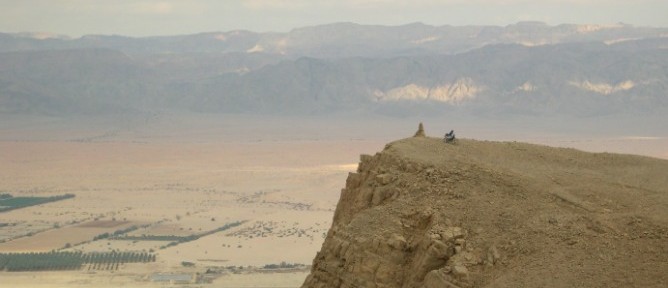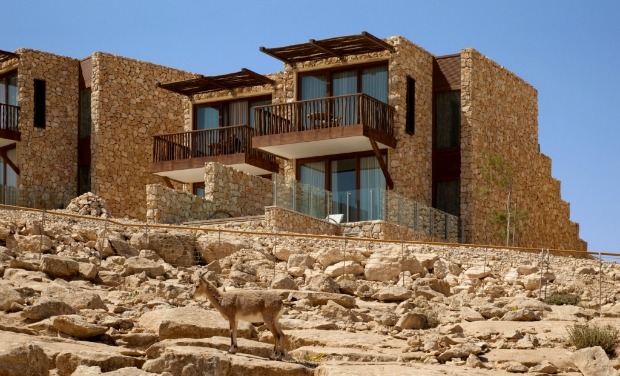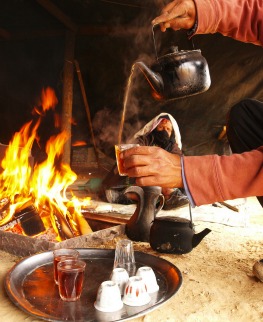Who would Maimonides vote for?
Your cut-out-and-keep guide (okay, your bookmark and reopen guide) to the runners and riders (sorry, parties and politicians) who’ll be running our lives
By RAPHAEL AHREN

“We are running a real democratic state, a real democratic parliament, and the system works,” Knesset Speaker and Likud MK Reuven Rivlin told foreign reporters in the Knesset this week. “Unfortunately, from time to time we have a lot of problems dealing with the idea of democracy.”
Rivlin was referring specifically to the complex interface between the Knesset and the Israeli Supreme Court, but his caveat about Israeli democracy might equally have applied to our electoral system, which will be gallumphing to center stage on January 22. We labor under an unreformed process of pure national proportional representation, in which every Tomer, Dikla and Rabbi Haim is capable of convincing him or herself they have a chance of entering parliament… and quite a few of them are right. Result in 2013: Thirty-plus parties competing for votes, and as many as a dozen of them likely to enter the Knesset. For the voter, it presents a dilemma fit for a Solomon, or a Maimonides (of whom more later).
On February 5, two weeks after we vote, the new cohort of 120 lawmakers will be sworn in at a festive event in the Knesset. By then, President Shimon Peres will have spoken with the leaders of each party that did make it into the Knesset, hearing their recommendations regarding which party leader should be charged with the task of building the new governing coalition. That’s when the hard bargaining over coalition agreements begins.
Which parties are likely to get their legislators into the Knesset? Who’ll fall by the wayside? Here is an overview, in order of projected strength. (Spoiler alert: Kadima doesn’t make it.)
Likud-Yisrael Beytenu
Led by Benjamin Netanyahu (Likud) and Avigdor Liberman (Yisrael Beytenu)
Hebrew ballot sign: מחל
Seats in 18th Knesset: 27 (Likud) + 15 (Yisrael Beytenu) = 42
Projected seats in 19th Knesset: 34-35
Despite polls indicating that the center-right Likud — which headed a relatively stable government for four years — was cruising to an easy reelection, party chair and Prime Minister Benjamin Netanyahu decided in September to join forces with former foreign minister Avigdor Liberman’s Yisrael Beytenu party, which derives much of its support from the Russian immigrant population. There has been much debate about what led the two former rivals to unite, but there can be little doubt that both are disappointed with the poll results heading into election day. US political strategist Arthur Finkelstein, who advises the campaign, promised 45 mandates for the united list. But then again, Finkelstein also predicted Mitt Romney would be the next American president.
Still, the disappointing poll results — 34 for the alliance in The Times of Israel’s poll a few days ago — do not change the fact that Likud-Beytenu will most likely become the Knesset’s largest faction, all but guaranteeing that Peres will ask Netanyahu to build Israel’s 33rd government. In this role, Netanyahu will have several key decisions to make: Should he hold vacant a senior ministerial portfolio for Liberman, who was indicted for fraud and breach of trust last month and might either be banned from public office for years or free to reenter politics in weeks? Should he opt for a rightist coalition with the settlers and the ultra-Orthodox? Or is it preferable to give the government a more moderate look by getting one or two centrist parties aboard?
Analysts say Netanyahu is keen on the second option, because he wants to marginalize his former chief-of-staff Naftali Bennett’s Jewish Home, the Likud’s competitor on the right, and because his own party took a sharp right-wing turn, ousting veteran relative moderates such as Dan Meridor and Michael Eitan (along with Benny Begin) from the party list and replacing them with nationalist hardliners. Indeed, for the first time, Moshe Feiglin gained a realistic spot, and while it is unlikely that Feiglin will be given a cabinet post, his controversial views — which include the desire to build a Third Temple and to offer Palestinians half a million dollars per family to emigrate – have raised eyebrows.
After establishing a government, the prime minister will have three major issues on his agenda: First of all, he needs to pass a budget. If he fails, the law calls for new elections. Next, a new law regulating the military draft must be passed, as the Supreme Court struck down the previous arrangement, which let Haredim evade service. But most of the prime minister’s attention may be devoted to the Iran threat. Netanyahu warned late last year that “by next spring, at most by next summer,” the regime in Tehran would move to the final stage of its plan to build a nuclear weapon, which Israel is determined to prevent.

A worker on Tuesday prepares ballot boxes for the January 22 elections at a warehouse in Shoham, near Tel Aviv, before they are shipped to polling stations. (photo credit: Yossi Zeliger/Flash90)
The Palestinian issue will most likely take a backseat — unless facts on the ground dictate otherwise. While nominally pursuing a two-state solution, Netanyahu is not keen on restarting a diplomatic effort to reach a final-status agreement with the current Palestinian leadership. Some Likud MKs have pledged to again submit legislation that would advance a slow process of de-facto annexation of the West Bank, efforts that Netanyahu had to quell in the previous Knesset. Whether he will be able to spare Israel the embarrassment of such a law advancing in the coming term will depend on the composition of his coalition.
Labor
Led by Shelly Yachimovich
Hebrew ballot sign: אמת
Seats in 18th Knesset: 8 (13 before Ehud Barak and four others split to form the Atzmaut — Independence — faction, which is not running)
Projected seats in 19th Knesset: 17-21
Under Yachimovich, Labor has made the firm decision to focus on what’s happening within Israel and not on where its borders should be drawn and what lies across them. In other words, the party that governed Israel for its first three decades no longer places the peace process with the Palestinians at the core of its platform. Rather, the stress is on socioeconomic issues.
A former journalist, Yachimovich is viewed as stronger and more credible on issues of housing, education and health than on security issues; her Knesset slate also features Stav Shaffir and Itzik Shmuli, two leaders of the 2011 social protest movement. Besides former defense minister Binyamin (Fuad) Ben-Eliezer and Omer Bar-Lev, the former commander of the army’s Sayeret Matkal elite unite, the party line-up lacks a recognizable personality from the security establishment who would lend it more clout and gravitas in this area.
Labor has largely recovered from the stormy days caused by Barak’s departure, though polls suggest not sufficiently to threaten Netanyahu. Still, after many months of refusing to rule out joining a Netanyahu-led coalition, Yachimovich announced recently that there are only two options: “Either the Labor Party under my leadership forms the government, or we will lead the opposition.”
According to the recent Times of Israel poll, 46 percent of likely voters have a positive view of Yachimovich (even though she reveals in a current television ad that she labels each Tupperware container in her freezer to help her remember what’s inside). In other words, if everyone who liked her voted for her, Labor would gain 55 seats. Thing is, a similar 46% also like Netanyahu. According to public opinion research analyst Stephan Miller, “as Yachimovich attacks the prime minister and announces her refusal to sit in a government with him, she is therefore essentially focusing her campaign on a [much smaller] target group, the 24% of voters (29 seats in Knesset) who like her but dislike the prime minister.”
Jewish Home (and National Union)
Led by Naftali Bennett
Hebrew ballot sign: טב
Seats in 18th Knesset: 3 (Jewish Home) +4 (National Union) = 7
Projected seats in 19th Knesset: 14-16
This list, built on a merger of the former National Religious Party and the “moderate” faction of the far-right National Union (everything’s relative), is the big winner of the campaign so far. Before political greenhorn Bennett — a former member of an elite army unit and a high-tech millionaire — beat out two veteran lawmakers for the chairmanship two months ago, no would have believed this party would get more than eight seats – and those were the optimistic forecasts. Now it looks like Jeremy Gimpel, placed 14th on the party’s Knesset list, has a very good shot at becoming the first US-born MK since Meir Kahane.
The new hero of the settlement movement, though he lives in Ra’anana, Bennett did two things that turned him into a rising star. He modernized the Knesset list, shaking off the NRP’s old sectarianism by bringing in the likes of Ayelet Shaked, a secular woman from Tel Aviv. And he said in an interview that he would rather go to jail then follow an IDF order to evacuate Jewish settlers in the West Bank. A national outcry ensued, and while Bennett later partially retracted (saying he was speaking in a personal capacity rather than adovocating mass refusal, but still maintaining that the “black flag” of illegality would apply to any such order), Netanyahu thought he could thwart Bennett’s rise in popularity by attacking him for the ostensible endorsement of insubordination. It didn’t work. After Netanyahu said that whoever refuses IDF orders has no place in his government, Jewish Home’s fortunes in the polls continued to rise.
Evidently, potential voters were not deterred by the stance of the man who previously served as Netanyahu’s chief of staff and head of the settlers’ Yesha Council, or by his vision for the West Bank. His so-called Stability Plan calls for Israel to annex Area C, the approximately 60% of the West Bank territory that is home to an estimated 4% of the Palestinian populace — an “imperfect plan” (according to Bennett himself), but evidently attractive to many Israelis.
Yesh Atid
Led by Yair Lapid
Seats in 18th Knesset: 0
Projected seats in 19th Knesset: 10-11
Hebrew ballot sign: פה
“We have come to change” — that’s the slogan of this centrist party, which promises to do away with the “old politics” of sectorial interests and instead serve all Israelis. To achieve that goal, former journalist Yair Lapid — the son of the late justice minister and staunch secularist Yosef (Tommy) Lapid — assembled a team of wannabe politicians from many parts of Israeli society. Yesh Atid is also the only party that doesn’t field a single MK, past or present.

Rabbi Shai Piron (photo credit: Nissim Lev)
Yesh Atid (like Labor) focuses on socioeconomic issues, and one of Lapid’s main criticisms is that too much government money goes to ultra-Orthodox yeshivas. His list includes, at number 17, US-born “modern Haredi” rabbi Dov Lipman, who made a name for himself fighting Haredi extremists in Beit Shemesh. Meanwhile, bizarrely, the No. 2 man on Lapid’s list, national-religious educator Rabbi Shai Piron, raised eyebrows a few days ago when he said that Bennett’s Jewish Home was a “good and worthy” party and that he would vote for it… if it wasn’t for the fact that he is running on the Yesh Atid ticket.
Shas
Led by Eli Yishai, Aryeh Deri and Ariel Attias
Hebrew ballot sign: שס
Seats in 18th Knesset: 11
Projected seats in 19th Knesset: 10-11 seats.
All important decisions in this ultra-Orthodox party are still being suggested to made by 93-year-old former chief rabbi Ovadia Yosef, one of the most revered Torah scholars of this generation. In the Knesset, his faction will be jointly headed (in theory) by the dull but dependable Eli Yishai, who as interior minister made headlines mostly with his fight against African migrants, the returned political wunderkind and ex-convict Aryeh Deri, who says he’ll fight for the country’s old and poor (and intriguingly featured his mother in a campaign ad), and Housing and Construction Minister Ariel Atias. But Deri is the real star, and a dominant figure in the party’s campaign ads.
Currently, the “Union of Torah-Observant Sephardim,” as the party is named officially, is taking flak for a racist television ad. The controversial spot depicts a “good Jew” under the wedding canopy who reacts with disgust when he finds out that his bride-to-be, a blond Russian-speaking bombshell, was not born Jewish but is joining the tribe via an ostensibly much-too-lenient Yisrael Beytenu-sponsored conversion system. It’s ironic, critics pointed out, that a party that was founded to battle ethnic discrimination is now putting down other ethnic minorities. Condemnations of the ad poured in immediately, and the party agreed to pull it. All very predictable, and all unlikely to harm Shas at the polls.
Hatnua
Led by Tzipi Livni
Hebrew ballot sign: צפ
Seats in 18th Knesset: 0
Projected seats in 19th Knesset: 5-9
Hatnua means “the movement” in Hebrew, but after too many scatological jokes, her spokesman decided the party should be referred to as “The Tzipi Livni Party” — a request universally ignored. Livni was once a fast-rising Likud minister, then she joined Kadima, served as former prime minister Ehud Olmert’s foreign minister, succeeded him as party leader, failed to defeat Netanyahu in 2009, lost the Kadima leadership early last year, and quit politics — only to return with this new party.
Some analysts believe Livni will quit politics again after the elections, if she doesn’t achieve her electoral goals, dooming Hatnua; sorry, The Tzipi Livni Party. But obviously others have more faith in her staying power: She was able to co-opt two former Labor heads, Amram Mitzna and Amir Peretz, who were frustrated that their former political home no longer seeks to focus on the peace process. (She also managed to get seven Kadima MKs to join her, with the vital campaign funding they brought with them.) Livni also incorporated the Green Movement, which in 2009 almost made it into the Knesset. The faction is headed by American-born Alon Tal; placed 13th on Hatnua’s list, though he has little chance of becoming an MK.
A recent Times of Israel poll predicts particularly poor election results for Livni. Likely voters overall view her more negatively than positively. And almost half of those who actually like her believe that socioeconomic issues are the most important ones, not Livni’s central campaign topic, the conflict with the Palestinians.
United Torah Judaism
Led by Yaakov Litzman
Hebrew ballot sign: ג
Seats in 18th Knesset: 5
Projected seats in 19th Knesset: 5-6
This ultra-Orthodox faction comprises two parties: the Hasidic Agudat Yisrael and the non-Hasidic (so-called Lithuanian) Degel Hatorah. Litzman, who was born in Germany and grew up in the US before becoming Israel’s most powerful Haredi politician, is a follower of the Gerer Rebbe. He currently serves as deputy health minister because, formally, his party does not want to be part of a godless Zionist government ruling the Holy Land. Issues of importance to his faction are mostly related to retaining the status quo regarding the Haredi place in society, such as fighting any proposal to draft yeshiva students.
The Haredi world also frowns on frivolous use of the Internet, which is why UTJ does not have an official website. It did, however, film a television ad, which, because very few of the party’s usual constituents will see it, focuses on topics of importance to everyone. For instance, the clip claims UTJ is the only party that “really fights for senior citizens in a country that has lost it values.” Surprisingly, the political message is followed by a catchy pop jingle promoting “[United] Torah Judaism, because we’re allharedim [devout] for the future of society.” Needless to say, this is sung by an all-male group.
Meretz
Led by Zahava Gal-On
Hebrew ballot sign: מרצ
Seats in 18th Knesset: 3
Projected seats in 19th Knesset: 4-6
Meretz is the Knesset’s only Zionist left-wing party, advocating the immediate implementation of a two-state solution based on the Arab Peace Initiative. A recent poll published by the Israel Democracy Institute and Tel Aviv University found 100% support among Meretz voters for a peace treaty based on the principle of two states for two peoples. To compare, 88 percent of Hatnua and 80 percent of Labor voters support a two-state solution based on these terms.

Meretz supporters wear masks depicting Shelly Yachimovich, Tzipi Livni and Yair Lapid, protesting their alleged willingness to join a Netanyahu government, December 17, 2012. (photo credit: Roni Schutzer/Flash90)
Founded in 1992 as an alliance of left-wing parties Mapam, Ratz and Shinui, Meretz has also long fought for a stricter separation of church and state, advocating public transportation on Shabbat and the granting of equal legal status to all streams of Judaism. Neither peace nor religious pluralism are topics of particular importance to most Israeli voters these days, so a fair showing is expected, but nothing to compare with the glory days when Meretz had a dozen MKs.
Hadash
Led by Mohammad Barakeh
Hebrew ballot sign: ו
Seats in 18th Knesset: 4
Projected seats in 19th Knesset: 4
Hadash — an acronym for Democratic Front for Peace and Equality — is an Arab-Israeli non-Zionist party hoping to rebuild “an effective, radical left within Israeli society.”
The biggest faction making up this list is Maki, Israel’s Communist party, yet Hadash’s parliamentary work doesn’t focus on disseminating the teachings of Lenin and Marx. Rather, it engages heavily in environmental and societal matters. For instance, MK Dov Khenin, No. 3 on the list, is credited with the law that extended maternity leave to 14 weeks. The party calls for a total Israeli withdrawal from territories gained in 1967, full civil equality of Arabs and Jews, women’s and workers’ rights and economic reforms. Hadash wants to set minimum wages at 60 percent of the average wage and raise benefits for families with children by 40 percent.
Ra’am-Ta’al
Led by Ibrahim Sarsur
Hebrew ballot sign: עם
Seats in 18th Knesset: 4
Projected seats in 19th Knesset: 4
No Arab party has participated in any of the 32 governments that have ruled this country since 1949, and that is not going to change in 2013. This faction is probably best known for the often controversial statements and actions of Deputy Knesset Speaker Ahmad Tibi. A physician by profession, Tibi was an adviser to Palestinian leader Yasser Arafat and has been an MK since 1999. According to its platform, the party fights for full equality of Israel’s Arab minority as well as the establishment of a Palestinian state, including a “right of return” for Palestinian refugees.
Balad
Led by Jamal Zahalka
Hebrew ballot sign: ד
Seats in 18th Knesset: 3
Projected seats in 19th Knesset: 3-4
Founded in 1996, Balad (an acronym for National Democratic Assembly) is another Arab-Israeli party that will never make it into the government. Its founder Azmi Bishara adopted the cry for “a state of all its citizens” — calling for equal rights for Jews and Arabs; some of the party’s MKs are known for more antagonistic attitudes.

Hanin Zoabi (center) and Jamal Zahalka (left) at the High Court of Justice (photo credit: Yonatan Sindel/Flash90)
Bishara himself now lives in Qatar, having fled Israel under suspicion of helping the Hezbollah terror group in Lebanon. And Hanin Zoabi, in 2010, sailed aboard the Mavi Marmara, the flagship vessel of the flotilla that tried to break Israel’s blockade of the Gaza Strip. Right-wing MKs got the Central Elections Committee to ban her from running this time, but the High Court of Justice overturned the decision, to the applause of Israeli legal experts, who argued a strong democracy must tolerate even extremist views.
Parties that are fighting for their survival
In Israel’s still unreformed electoral system, MKs are elected by pure proportional representation. If a party gets, say, half the votes nationwide, it wins half the 120 seats in parliament (though no party has ever managed that). There is no constituency accountability for MKs, who are chosen by the parties by various more and less democratic means. A party needs to gain 2 percent of the national vote to clear the threshhold and gain representation in parliament.
The following three parties are hoping to clear that threshold — two are split-offs from larger lists and one, amazingly, was the outgoing Knesset’s biggest party. Our recent poll suggested none of them will make it. Another 20 or so parties are also running. We’ll tell you more about them after January 22… if they defy all conventional wisdom and win seats.
Am Shalem
Led by Haim Amsalem
Hebrew ballot sign: ץ
Seats in 18th Knesset: 0 (Amsalem was a Shas MK, who parted ways with the party)
Projected seats in 19th Knesset: 0-2

Maimonides (photo credit: Wikimedia commons)
Created by Rabbi Haim Amsalem, the (almost) eponymous party presents itself as the enlightened, modern version of Shas. Born in 1959 in the Mediterranean port of Oran, Algeria, Amsalem moved to France as a child and served two years as the chief Sephardic rabbi in Geneva, Switzerland, before immigrating to Israel. After a falling out with the party due to his unorthodox views, especially regarding the ultra-Orthodox’s need to enter the military and workforce, he left Shas, claiming its leaders had “betrayed their voters.”
Shas “once had a reason to exist, but failed. It was created first of all to fight discrimination. It did a thousand other things, but not that,” he told The Times of Israel recently. Amsalem is the only recognizable name on his party’s list, which is “the vote of the brave,” according to its campaign slogan. This is topped by the hard-to-verify (or disprove) claim, made in Amsalem’s TV ad, that the medieval scholar Maimonides would vote Am Shalem if he were alive today.
Otzma Leyisrael
Led by Arye Eldad and Michael Ben Ari
Hebrew ballot sign: נץ
Seats in 18th Knesset: 0 (both men served as MKs, with the National Union)
Projected seats in 19th Knesset: 0-2 seats
After Jewish Home formed an alliance with the Tekuma party (which belonged to the National Union), two politicians from the faction’s more hawkish flanks split off to form this new party: the secular Arye Eldad, of Hatikva, and the skullcap-wearing Michael Ben Ari, of Eretz Yisrael Shelanu. They are joined by other far-right politicians, including the US-born Baruch Marzel, the list’s No. 3.
Some Jewish Home supporters encourage those right-wing activists for whom Jewish Home is deemed too moderate to support Otzma Leyisrael for strategic reasons: If Otzma Leyisrael enters the Knesset, some of Bennett’s supporters argue, it would make Jewish Home appear less extreme and thus render it more likely to get a Netanyahu coalition invite.

Sheets of newly printed ballots at a printing house in Jerusalem Thursday. (photo credit: Miriam Alster/ Flash90)
Kadima
Led by Shaul Mofaz
Hebrew ballot sign: כן
Seats in 18th Knesset: 28
Projected seats in the 19th Knesset: 0-2
Founded by Ariel Sharon in 2005, Kadima will most likely not live to see its 10th birthday. Only three out of 803 respondents, or 0.4 percent, in the recent Times of Israel survey said they would vote for the party, the largest in the outgoing Knesset.
Data from that survey shows how the list’s 28 seats are divided — with a vast 41 percent of former Kadima voters undecided as of a few days ago, and looking for a new party to support. Some 20 percent are switching to Labor, 13 percent to Yesh Atid, and about 10 percent each to Hatnua and Likud-Beytenu.
Kadima’s ads feature an array of local politicians vowing they’ll vote Kadima, plus former prime minister Olmert saying there is no worthier politician than its leader Shaul Mofaz. Presumably Olmert does believe one politician is more worthy and, some pundits say, would rather like Kadima to still be around if and when he is clear of his legal troubles and ready to make a political comeback — if not in the 19th Knesset, then maybe in the 20th.
























